-

Over the last few decades, the internet has evolved from a novelty used solely by scientists and the military, to a widespread (practically essential) utility used by everybody from grade-schoolers to international businesses. It’s no longer a question of whether or not your business is using the internet, it’s a question of how.
These days, every business has a choice. Do you want to manage your hardware and software yourself, or do you want to pay someone else to do it for you? This is the basic choice between bespoke infrastructure and the cloud.
Cloud computing can be broadly divided into two categories: public and private. Deciding between the two can be tricky, so we put together this guide to help you decide.
What Is a Public Cloud?
First, let’s talk about what a public cloud is. A public cloud is a company like Microsoft Azure or Amazon AWS providing a data center full of powerful computers and more storage than we can comprehend, on which you rent space and power. You can use these for individual applications – software in a Software As A Service (SaaS) model, an environment or platform in the Platform As A Service model (PaaS), and so on – or you can use it to host your total business systems as an entirely cloud-based architecture.

The key to understanding a public cloud option is knowing two things: your company does not own the hardware, and your company does not have exclusive rights to use the hardware.
A company provides the hardware and some degree of software, whether it’s little more than a basic operating system, or a full-on software suite that you rent and customize for your needs within the limitations that they set. Webmail is cloud-based email, Dropbox is cloud-based storage, and the Adobe Marketing Cloud is exactly what it sounds like (for example).
What Is a Private Cloud?
Private clouds are a more “traditional” business model, in a sense. Unlike public cloud options, you own and control the hardware. This means your business sets up a networking station, from which it runs servers, business applications, and whatever other software is necessary for your business to run.

In this model, you generally need either a managed services provider to handle upkeep for your infrastructure, or you need a large and dedicated IT team to make sure everything is running smoothly. You also tend to need specialized services from your utilities, like a guaranteed uptime from your internet provider and backup power options for your data center. You also need a strong backup system in place in the event of failures, adequate cooling, and periodic maintenance and upgrades. It’s a lot to manage, especially for a smaller company without a team of network architecture experts.
Other Types of Cloud Services
There are, of course, a wide range of variations on this business model. Large cloud providers like Microsoft and Amazon (with Microsoft Azure and Amazon Web Services, respectively) offer options such as virtual private clouds and hybrid clouds.
Virtual private clouds are similar to public clouds or dedicated servers. Your company pays the cloud provider for cloud services, but rather than a limited service or app on the cloud, your business has dedicated access to the server from the ground up and can set up whatever level of infrastructure and software you need. You don’t own the physical hardware, but all of the software is your responsibility. This is a happy medium for those who want root access and full control over their files and software, without the headache of maintaining your data and scaling your hardware usage.

A hybrid cloud solution, meanwhile, is a combination of on-premises hardware and software with some cloud-based solutions. For each application – whether it’s email, storage, application tracking, hiring, contact management, or whatever else – the best option is chosen from among the other cloud options. Once all of those choices are made, a hybrid solution is provisioned and you can start migrating your application to your cloud service.
Many businesses end up with a hybrid cloud solution at the end of the day, though most might not think of it in those terms. A business that keeps most of its infrastructure and software local (but uses cloud storage, webmail, or web-based creative suites) is still technically using a hybrid cloud solution.
Which Is Right For You?
There are a lot of different points of concern for any business looking to pick up some level of cloud applications. We’ve identified seven primary points to discuss: privacy and security, complexity, cost, reliability, ease of migration, scalability, and maintenance.
Many of these are somewhat interrelated, of course, and they all affect cost in some way or another. Let’s dig in.
Point 1: Privacy and Security
As you might expect, the private cloud tends to win over the public cloud in terms of privacy. It’s right there in the name. That’s not the entire story, though.
Privacy concerns can come up in two ways: whether or not the data you put on the cloud servers is accessible to others outside of your organization, and whether or not it’s possible for your data to be breached by someone accessing the servers from another vector.
For the first concern, a private cloud can be very strongly locked down. If your company is run solely through a single office, for example, your cloud doesn’t need to be accessible to any external internet connection, only internal intranet connections. For larger companies with multiple offices or remote workers, VPNs and other secure forms of connection can be used to access the private cloud. In all cases, the chances of a hacker breaching your cloud are pretty slim.
The second concern relates to the security of the cloud provider. If you’re hosting your data on a public cloud through Amazon’s AWS, for example, it would technically be possible for someone to breach a server and access the data on that server without having to breach your infrastructure.
Now, both Microsoft and Amazon have extraordinarily strong security on their servers, with limited or restricted access. They’ll also segregate data between clients; if an unrelated customer of theirs is breached, your data isn’t very likely to be at risk.
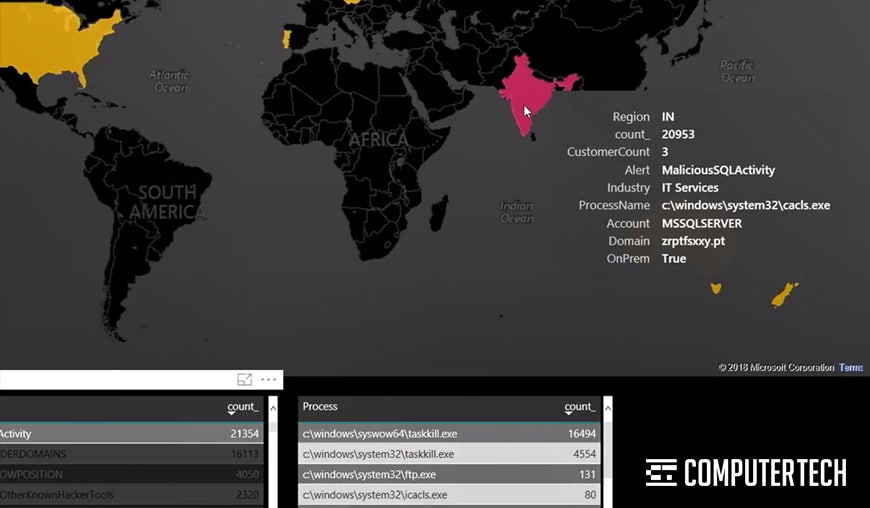
It would have to be the company itself getting breached on a much more serious level. That’s not to say it can’t happen, though; Amazon has had breaches in the past from users with buckets that weren’t set to “Private”.
With a private cloud, you have some level of security through obscurity. If people don’t know your network exists, there won’t be a dedicated effort to attack it. On the other hand, you are responsible for maintaining your own security; if your IT team isn’t capable of keeping your security configurations up to date and secure according to best practices, that puts your system at greater risk.
Neither option is completely better than the other here. Smaller companies without the ability to hire dedicated information security specialists are likely better off going with a public cloud option, while larger companies who are willing to be responsible for their own systems and who have access to forensic and network security experts can safely go with a private cloud option. When properly managed, private clouds can be just as secure as public clouds.
Point 2: Complexity
Complexity for a cloud system is inherent, and the difference between a private and a public cloud can swing in either direction.
With a public cloud, one major source of complexity is taken out of your hands: the hardware. You also may be limited in what you can do with the public cloud architecture. Some public cloud offerings are basically servers you can do anything you want with, from the operating system on up. These are the most complex to manage since every aspect of the software is yours to configure, for better or for worse.

On the other hand, some public cloud providers are limited in what you can do; webmail, cloud storage, and cloud-based apps like Canva, Office 365, or WordPress.com come to mind.
With a private cloud, complexity is high when you’re setting everything up, but once it’s up and running, the complexity drops to maintenance levels. A successfully run private cloud system, from the front end, looks like a public cloud system to end-users. However, you will always need your IT staff available to address any problems, whether they’re software bugs, updates, hardware issues, uptime, or anything else.
Thus, on the point of complexity, a public cloud is almost always less complex to deploy.
Point 3: Cost
The cost comparison between cloud options varies quite a bit.
At the very low end of cost is pure public cloud options. Using cloud services like, say, Gmail, can be free for small-scale operations. Even enterprise-level use of something like G Suite is quite cheap depending on your usage, ranging from $6 to $25 per user per month. Of course, something like G Suite is also limited in what you can do; you have email, chat, storage, and other major features, but it’s a far cry from having free use of an entire server.
As you scale up in price, public options at enterprise scale get more expensive. Hybrid options become more viable, as buying and maintaining a limited selection of hardware for some business services but using cloud services for the rest ends up being cheaper than moving to an entirely private cloud.
Private clouds tend to be quite expensive, with the cost of high-end hardware, utilities to guarantee uptime, high-bandwidth connections, adequate cooling, backup drives and software, and software licenses for an entire enterprise. It can easily run into the tens of thousands of dollars.
Private clouds also have some surprising recurring costs. Your hardware is a one-time purchase (at first anyway), but you need to take into account the cost of maintaining that hardware, replacing what breaks, and upgrading in the future. You also have to factor in the cost of your on-staff IT or outsourced MSP presence, electricity costs, and outside costs in the event that something goes wrong, such as an intrusion, prolonged internet downtime, or data loss. These are things you don’t have to worry about with public clouds, where this is all done behind the scenes and around the clock.
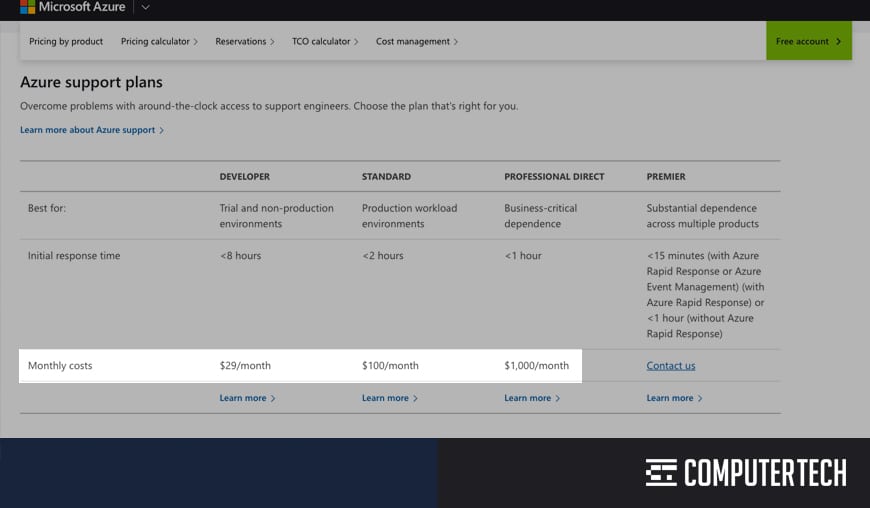
Pricing within each level of service varies enough that you can find counter-examples for every use case. Shopping around is really the only way to ensure you’re getting a reasonable price for the services you need. For example, Microsoft Azure has a modular system where you can bundle together the services you need and pay a cost based on those services, your monthly usage, and other factors. This allows an enterprise company to carefully calculate exactly what features they need and how it fits into their budget.
We’re going to give the public cloud another win here. When you’re a larger company spending billions on hardware, electricity costs, and recruiting the top IT talent in the world, services like Microsoft Azure can drive down their costs quite a bit. Their pricing for 500,000 hard drives is quite a bit better than what you’d end up paying per unit.
Point 4: Reliability
Reliability with the public cloud is generally quite high. Large-scale cloud providers like AWS and Azure have multiple redundant data centers and, more importantly, have massive dedicated internet trunks, backup power sources, and tons of staff to keep everything running smoothly. Service interruptions are generally near-zero, and segmentation of service means something that affects one sub-section of one cloud service won’t bring down the entire cloud. That is, after all, the primary benefit of the cloud in the first place. If you’re curious, you can see Amazon’s service status and history for AWS and other Amazon services here.

By contrast, a private cloud is only as reliable as the software, hardware, and staff you have attending it. If something happens, like a construction crew severing a fiber line, you need to have a backup in place or suffer downtime. If a hard drive fails, a motherboard shorts out, or a power supply fries itself, you need to not only have redundancy to alleviate the immediate issue, but you need a way to replace the equipment with minimal or zero downtime.
Thus, the more reliable you want your private cloud to be, the more you have to invest in it. These costs can quickly skyrocket, which is why many people tend to choose a public cloud option.
The public cloud gets another win. It would take a significant capital investment to build a datacenter as reliable as these Fortune 500 companies.
Point 5: Migration
Migration to and from different levels of cloud service can vary. Migrating from local infrastructure to a private cloud is mostly a matter of scaling up your operations, and often requires some tricky data imports and re-training users on a new system.
Migrating from a public cloud to a private cloud, likewise, might involve some tricky data handling depending on how congruent your private system is with the public system and how easily the public system allows you to transfer your data. If these files or applications are critical to your business, you’ll likely want to hire an expert to assist you to minimize technical snags and downtime.
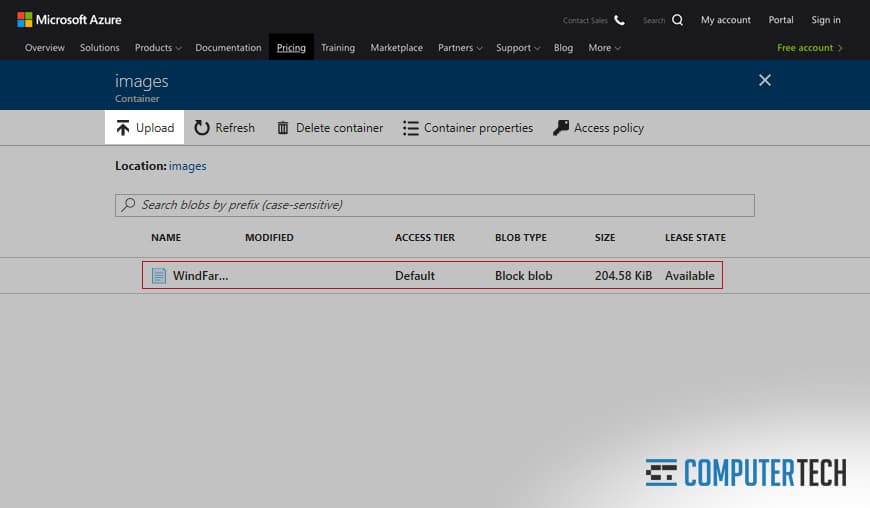
With a private networking architecture, the primary advantage is having access to drives at your fingertips, but this advantage starts to matter less when you consider migrating for the sake of scalability. If you’re exceeding your storage limits on your local network or want to upgrade your drives, doing so with a private cloud requires data transfers, downtime, and your IT staff with all hands on deck. If you want more storage on a private cloud, you can deploy it instantly with the click of your mouse.
The private cloud and public cloud options get a tie here. There are migration pros and cons with both options.
Point 6: Scalability
One major concern for any business looking to grow substantially over the next 1-5 years is how easily a business system can scale as the business grows.
A private cloud tends to have a disadvantage here. Scaling up a private cloud means buying more hardware, more software licenses, and more IT staff to maintain it. The cost can grow faster than the business, to suit the business’s needs.
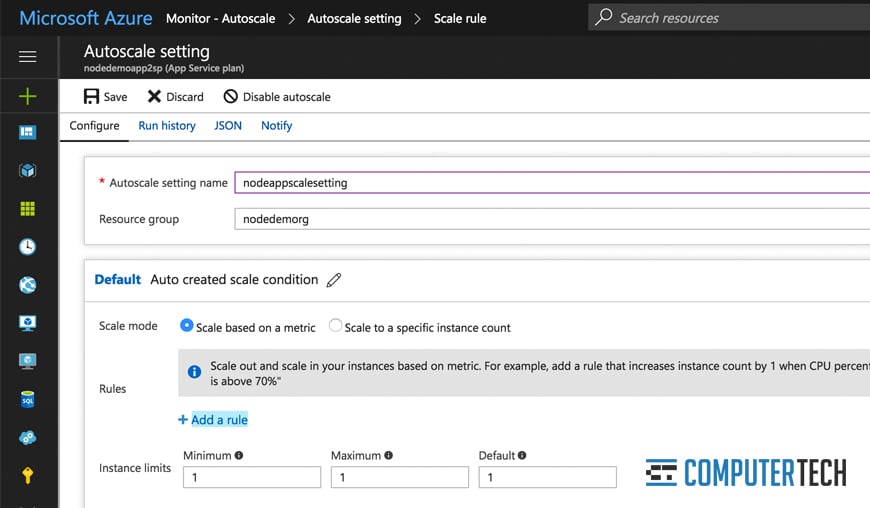
Public cloud platforms, meanwhile, generally already have scaled pricing in place. If you’re using Microsoft Azure and you need to add a new service, it’s a matter of a few button clicks or a brief chat with an account rep. In fact, some services simply charge you based on your usage of the service, so scaling is automatic.
The public cloud is the winner in this category.
Point 7: Maintenance
Public clouds always have a benefit in the realm of maintenance. Amazon, Microsoft, or any other cloud provider already has a dedicated team doing nothing but maintaining and updating their cloud systems. It’s all done out of your hands, and you don’t need to pay extra to have your hardware maintained.
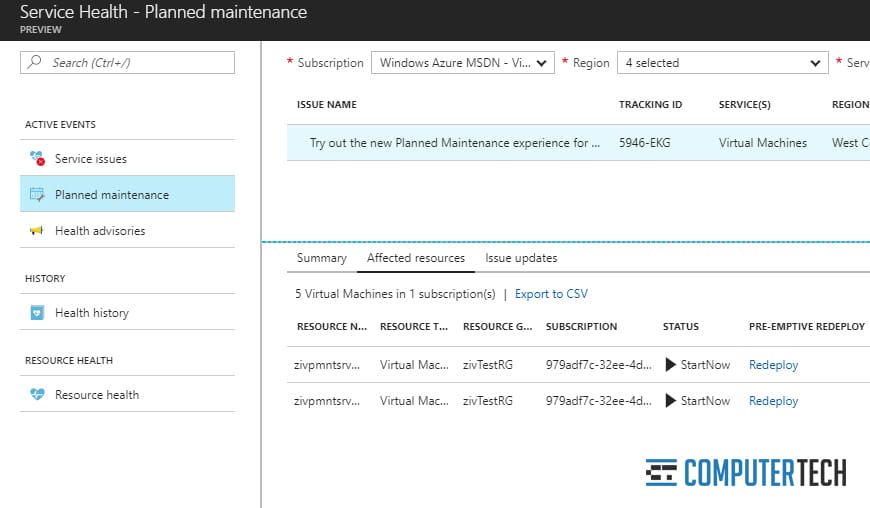
Conversely, with a private cloud, you’re tasked with maintaining everything yourself. If your IT team doesn’t have the resources to keep software up to date, your organization suffers. If you don’t have the redundancy necessary to avoid downtime, maintenance windows remove the uptime value of a cloud system. Many commercial areas also don’t have access to the same gigabit lines that datacenters have – if you’re running a private cloud on a cable connection, you can expect periodic downtime.
The public cloud gets another win here. In fact, this is one of the biggest benefits of the public cloud: the peace of mind that you will always have access to your cloud files and systems.
Overall Recommendations
The majority of small and mid-sized businesses will find that a public cloud option will work best for them, as a good balance between the benefits of the cloud, the expenses associated with running infrastructure, and the ease of scaling as the business grows.
Larger businesses often find that a hybrid setup works best; sometimes a particular business service needs to run on proprietary hardware or in an environment the public clouds don’t support, and it’s cheaper and easier to set up local cloud hardware to run it than pay for exotic configurations.
The largest businesses – like Microsoft and Amazon themselves – find that their own in-house private clouds are the best solution. When you have those kinds of resources, buying and maintaining your own multi-million dollar private cloud is no problem.
About The Author
Herman
Herman is the lead team member here at Computertech.com. He’s been in IT for over 20 years and has expertise in our various IT Services including Microsoft Azure, Microsoft 365, Microsoft Teams and even Computer Security.
No related posts.
IT Support | IT Services | IT Consultant | Computer Support
Speak to a Human (856) 347-2282
- Home
- About Us
- Services
- IT Support
- Managed IT Services
- IT Consulting and Strategy
- IT Security Services
- IT Infrastructure Services and Networking
- Help Desk and Onsite Support
- Communication and Collaboration
- Specialist IT Services
- Data Backup and Disaster Recovery
- Cloud Computing
- Optimizing Network Consulting Services
- Remote Monitoring and IT Management
- Business Computer Services and Consulting
- Blog
- Contact Us
Navigation- Home
- About Us
- » About Computer Tech
- » What To Expect
- Services
- » IT Support
- » Managed IT Services
- » IT Consulting and Strategy
- » IT Security Services
- » IT Infrastructure Services and Networking
- » Help Desk and Onsite Support
- » Communication and Collaboration
- » Specialist IT Services
- » Data Backup and Disaster Recovery
- » Cloud Computing
- » Optimizing Network Consulting Services
- » Remote Monitoring and IT Management
- » Business Computer Services and Consulting
- Blog
- Contact Us
The Pros and Cons of Public vs Private Cloud Computing
In need of IT Services or IT Support? Call us today at (856) 347-2282
About Us
Computer Tech is an IT Consultant \ Computer Consultant firm providing Computer Support, IT Support and IT Services in South Jersey, IT Services Delaware, IT Services New Jersey, Philadelphia Pennsylvania.
(856) 347-2282Get started:
- Pros and Cons of Outsourced SOC (Security Operations)
- How to Find and Eliminate Wi-Fi Interference in the Office
- 7 Tips to Wire Up an Office to Maximize Wi-Fi Speed
- Can You Still Recover Hard Drive Data if It’s Water Damaged?
- How New Technology Has Changed the Modern Workplace
- The Pros and Cons of Outsourcing Your IT Department
- Custom Gaming Installations for New Jersey Businesses
- Computer Installation in New Jersey – How Does It Work?
- How to Hire an IT Team to Build an Office Network
- The Benefits and Future of Remote IT Support for Businesses
Newsletter
Computer Tech, LLC.
105 Market Pl Suite 1, Glassboro, NJ 08028
(856) 347-2282
© Copyright 2025 HighTech Business Solutions. All Rights Reserved.



